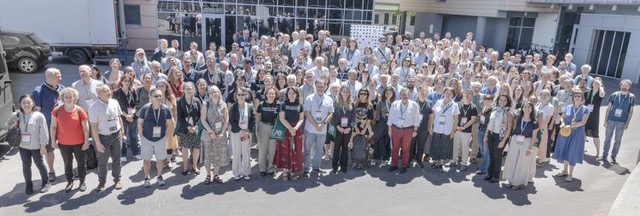The 25th Radiocarbon Conference
Minoru Sakamoto, National Museum of Japanese History
The 25th Radiocarbon Conference, hosted by AGH University of Science and Technology in Poland, was held in Kraków from June 29 to July 4, 2025. The Radiocarbon Conference, held every three years, provides an important opportunity for researchers from around the world working on radiocarbon (14C) to gather and exchange knowledge. Many researchers from Japan, including the TranSEHA members−the author, Kitagawa, Miyake, and Minami−participated in the meeting.
14C is used not only for dating in archaeology but also in a wide range of fields, including climate science, atmospheric science, hydrology, and sedimentology. 14C in tree rings serves as an indicator of solar activity, exemplified by the Miyake Event. Applications are also advancing in forensic science, such as studying the pharmacokinetics of drugs labeled with 14C and estimating the time of death.
Sample preparation methods and measurement techniques are also important topics. While Accelerator Mass Spectrometry (AMS) is currently the mainstream method for 14C measurement, Positive Ion Mass Spectrometry (PIMS), which directly introduces carbon dioxide to measure 14C, has recently reached practical stage. As a method offering dramatically improved efficiency, it garnered significant attention. This method, which dramatically improves ionization efficiency, attracted attention at the conference, with a dedicated session held and a facility tour of the PIMS instrument installed at AGH University.
Towards the end of the conference, a roadmap for revising the calibration curve IntCal, which converts 14C measured values into calendar years, was presented. The calibration curve is updated every few years; the current IntCal20 incorporates Japanese tree-ring data provided by the National Museum of Japanese History. Triggered by the discovery at the Miyake Event, 14C dating of individual tree-ring layers is now being conducted worldwide. The next IntCal, reflecting the latest data, is scheduled to be released in 2026.
